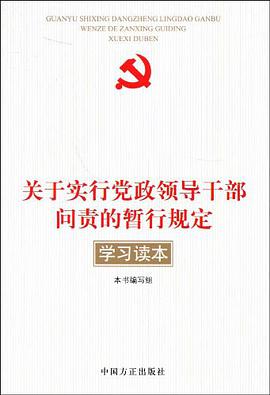前言
绪论
第1章 蛋白质的结构与功能
1.1 蛋白质的氨基酸组成
1.2 蛋白质的分子结构
1.3 蛋白质结构与功能的关系
1.4 蛋白质的理化性质及其纯化原理
1.5 蛋白质组与蛋白质组学
小结
第2章 核酸的结构与功能
2.1 核酸的结构单位——核苷酸
2.2 DNA的结构与功能
2.3 RNA的结构与功能
2.4 核酸的性质
2.5 核酸酶
2.6 基因组学与人类基因组计划
小结
第3章 酶
3.1 酶的结构与功能
3.2 酶促反应的特点与机制
3.3 酶促反应动力学
3.4 酶活性的调节
3.5 酶的命名与分类
3.6 酶的临床应用
小结
第4章 糖代谢
4.1 糖的消化与吸收
4.2 葡萄糖的无氧降解
4.3 葡萄糖的有氧氧化
4.4 糖原的合成与分解
4.5 糖异生作用
4.6 磷酸戊糖途径
4.7 血糖及其调节
小结
第5章 脂质代谢
5.1 脂肪酸与多不饱和脂肪酸衍生物
5.2 脂质的消化与吸收
5.3 三酰甘油的代谢
5.4 磷脂的代谢
5.5 胆固醇的代谢
5.6 血浆脂蛋白的代谢
小结
第6章 生物氧化
6.1 电子传递链
6.2 氧化磷酸化
6.3 ATP和其他高能化合物
6.4 线粒体内膜的选择性转运作用
6.5 其他生物氧化作用
小结
第7章 蛋白质的分解代谢
7.1 食物蛋白质的营养作用
7.2 蛋白质的消化、吸收与腐败
7.3 细胞内蛋白质的降解
7.4 氨基酸的一般分解代谢
7.5 氨的代谢
7.6 个别氨基酸的分解代谢
小结
第8章 核苷酸的代谢
8.1 核苷酸的生物医学功能
8.2 核酸的降解
8.3 嘌呤核苷酸的代谢
8.4 嘧啶核苷酸的代谢
8.5 脱氧核苷酸的合成
8.6 核苷二磷酸与核苷三磷酸的合成
8.7 核苷酸的代谢障碍与抗代谢物
小结
第9章 物质代谢的调节
9.1 细胞水平的代谢调节
9.2 激素水乎的代谢调节
9.3 整体水平的代谢调节
小结
第10章 DNA的生物合成
10.1 DNA复制概述
10.2 真核生物DNA复制
10.3 原核生物DNA复制
10.4 DNA复制的其他类型
10.5 DNA的损伤与修复
小结
第11章 RNA的生物合成
11.1 转录概述
11.2 真核生物的转录过程
11.3 真核生物RNA的加工
11.4 原核生物的转录过程
11.5 RNA指导的RNA的合成
小结
第12章 蛋白质的生物合成
12.1 翻译机器
12.2 氨基酸的激活
12.3 蛋白质生物合成过程
12.4 蛋白质翻译后的修饰与靶向转运
12.5 蛋白质生物合成与医学的关系
小结
第13章 基因表达的调控
13.1 基因表达的基本特征
13.2 原核生物基因表达的调节
13.3 真核生物基因表达的调节
小结
第14章 DNA技术
14.1 基因工程
14.2 分子杂交
14.3 聚合酶链反应
14.4 DNA序列分析
14.5 转基因作用、动物克隆和基因剔除技术
14.6 基因诊断
14.7 基因治疗
小结
第15章 生物膜
15.1 生物膜的分子组成
15.2 生物膜的结构
15.3 生物膜的转运功能
15.4 生物膜与医学
小结
第16章 糖蛋白、蛋白聚糖与细胞外基质
16.1 糖蛋白的结构与功能
16.2 蛋白聚糖的结构与功能
16.3 细胞外基质
小结
第17章 信号转导
17.1 信号分子
17.2 受体
17.3 信号转导途径
17.4 信号转导途径间的相互联系
17.5 信号转导与医学
小结
第18章 癌基因、抑癌基因与生长因子
18.1 癌基因
18.2 抑癌基因
18.3 生长因子
小结
第19章 血液生物化学
19.1 血浆蛋白质
19.2 血液凝固
19.3 血细胞的代谢
小结
第20章 肝的生物化学
20.1 肝在物质代谢中的作用
20.2 肝的生物转化作用
20.3 胆汁酸的代谢
20.4 胆色素的代谢与黄疸
小结
第21章 维生素与无机物
21.1 脂溶性维生素
21.2 水溶性维生素
21.3 钙、磷和镁的代谢
21.4 微量元素
小结
附录A 希腊字母表
附录B 系统国际单位的前缧
附录C 化合物名词的数字前缀
附录D 本书常用生化名词缩写
附录E 英-中索引
附录F 主要参考书目
名词释义
序言
Biochemistry is the most common course for medical students embarking on study in medical sci-ences。 The authors of this textbook are very pleased to present the Biochemistry: a textbook formedical students。The purposes of this textbook are to present a precise and concise teaching materi-al of biochemistry to the abroad students and the Chinese students who are being educated withdouble languages, as well as the teachers who are teaching biochemistry to those students in themedical universities or colleges of China。Despite the ever-increasing complexity of biochemicalknowledge and ever-increasing importance of biochemistry for the medical sciences, as a teachingmaterial, we could not match the increased volume of knowledge in this field by an increased size ofthe textbook。 We designed the textbook by selecting the contents sufficiently covering most of theimportant topics in a medical biochemistry course。It is clear and concise enough for students to mas-ter the basic biochemical theories, rudimentary knowledge, and fundamental skills in biochemistry。 The textbook is organized and written so that the sequences of chapters are most appropriate forkeeping their inherent regularity and connections, and for the students to read from the easy to thedifficult and complicated。 In this textbook, the twenty one chapters can be divided into four parts。The first part includes the first three chapters dealing with the structure and function of proteins,nucleic acids, and enzymes。Nucleic acids are related to the storage and transmission of genetic infor-mation。The function of proteins is the embodiment of the life。 Enzymes catalyze almost all of thechemical reactions in cells。 It is vital to understand these properties of the macrobiomolecules beforestudying the following chapters。 The second part explains how the organism metabolizes carbohy-drates, lipids, and amino acids for releasing and utilizing energy, or providing the building blocks。The third part describes the transmission of genetic information including DNA replication and re-pair, RNA transcription and modification, protein synthesis, regulation of gene expression, andDNA technology。The last part discusses seven special topics dealing with extracellular and intrace-llular communication (membrane, glycoconjugates, signal transduction, oncogenes, tumor suppres-sor genes and growth factors), blood and liver biochemistry, and vitamins and minerals。 Glossaryand appendix provide the students and teachers with very useful basic knowledge to facilitate thelearning and teaching。 The authors thank the Medical College of Qing Dao University, the International Education Coll-ege of Dalian Medical University, and the universities and colleges where they are teaching for theenthusiastic supports。 We are grateful to Li Yue, the editor in Sciences Press, and Li Gang, theprofessor in Medical Libratory of Beijing University for their friendly help。 During the writing andediting, suggestions from colleagues and students have been helpful in the formulation of this book。We look forward to receiving more suggestions and comments in the future。
· · · · · · (
收起)






















